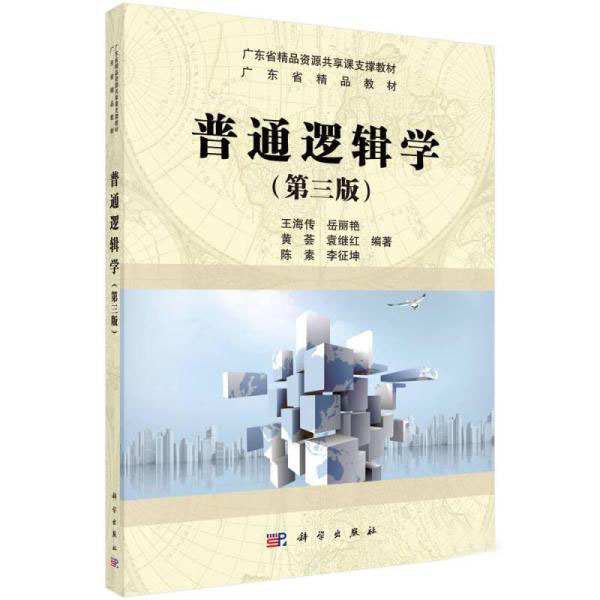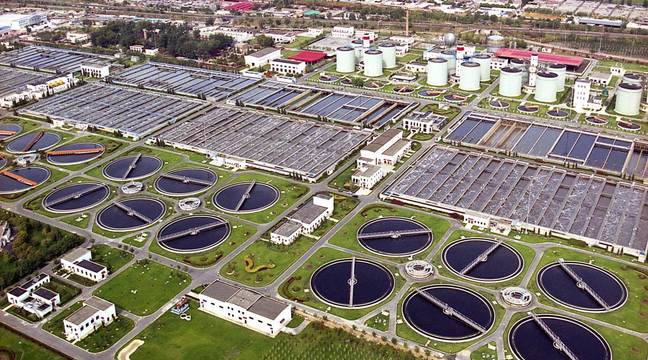
当前课程知识点:Water and Wastewater Treatment Engineering: Biochemical Technology > Chapter 6 Biological nitrogen and phosphorus removal process > Section 6.4 Simultaneous nitrogen and phosphorus removal process > Section 6.4 Simultaneous nitrogen and phosphorus removal process
返回《Water and Wastewater Treatment Engineering: Biochemical Technology》慕课在线视频课程列表
返回《Water and Wastewater Treatment Engineering: Biochemical Technology》慕课在线视频列表
同学们好,下面我们来学习第四节同步脱氮除磷工艺
同学们都知道在生活污水中间,一般都同时含有氮和磷
那么,要想分开把它单独处理有一定的困难
所以我们很多的研究者,努力的开发这种同步脱碳除磷工艺
首先,给大家介绍第一个同步脱碳除磷工艺
我们称为Bardenpho同步脱氮除磷工艺
这里给出的是它的工艺流程
我们可以看出,它有两次的A-O串联在一起
第一级是一个缺氧反应器,有的时候也把它称为厌氧反应器
但是它主要的功能是来实现反硝化脱氮
同时会把磷,回流中间的磷释放
第二级是好氧反应器
实现硝化反应、去除残余的BOD以及吸收磷的功能
随后再进行一次厌氧反应器
将活性污泥中间的除磷菌或者是除磷菌中间的聚合磷酸盐
进行彻底的释放,同时还会起到反硝化的作用
最后一个,还是一个好氧反应器
进一步的去除BOD,进一步的把氨氮氧化成硝酸盐
在第一级的A-O工艺中间有硝化液的回流
经过二层沉淀以后回的流污泥,是直接回流到第一级的厌氧反应器
这样的一个工艺,它的主要特点是各项反应都反复进行了两次以上
各个反应单元都有其首要的功能
同时又兼有第二项或者第三项的辅助功能
所以整个工艺脱氮除磷的效果比较良好
但是我们也可以看到它们的流程是比较复杂的
所以,在实际工程中间
我们更多采用的是这种我们称为A-A-O同步脱氮除磷工艺
有的时候,也把它称为A^2O工艺
这里给出的是A^2O工艺的一个工艺流程
我们可以看到,第一级是一个厌氧反应器
在这个里面,实现回流污泥中间除磷菌的磷的释放
同时,进水中间的有机氮会转变成氨氮
第二级是一个缺氧反应器
通过硝化液的回流,进水中间的有机物,在缺氧反应器中间
跟硝酸盐发生反应,实现脱氮,把硝酸盐转换成氮气
在这个过程中间,需要进行搅拌
最后一级,是一个好氧反应器
好氧反应器,主要完成氨氮的硝化以及残留的有机物的去除
同时,还会完成磷酸盐的吸收或者说是磷酸盐的摄取
最终,混合液进入二级池进行沉淀
沉淀后的污泥,一部分作为剩余污泥排放
一部分,回流进入第一级的厌氧反应器
这样的一个A^2O工艺,它的工艺特点,是工艺流程相对来说比较简单
厌氧缺氧好氧交替的运行,所以有利于控制污泥膨胀
同时在这个过程中间,不需要投加化学药剂,运行费用也比较低
对于脱氮除磷有比较好的效果
这张表给出了A^2O工艺的一些基本的工艺参数
我们可以看到,首先从水力停留时间上来看
在厌氧反应器中间的停留时间一般是在0.5-1.0h
缺氧反应器中间,停留时间也是在0.5-1.0h
而好氧反应器的停留时间是3.5-6.0h
污泥的回流比通常是50-100%
而混合液的内循环回流比是在100-300%之间
混合液中间的污泥浓度通常是在3000-5000mg/L
有机负荷,或者说是F/M一般是在0.05-0.15之间
好氧反应器中间的溶解氧浓度,一般会控制在2mg/l以上
BOD和磷的比,如果要实现好的比较高的磷的去除效果
我们希望BOD5/P会在5-15之间,一般要大于10
第三个同步脱氮除磷工艺,称为Phoredox同步脱氮除磷工艺
我们可以看出,它实际上是在第一个Bardenpho的工艺基础之上
在缺氧反应器之前再增加一个厌氧反应器
强化磷的释放,从而保证在好氧条件下
有更好的更强的吸收磷的能力,提高整个工艺对磷的去除效果
第四个工艺,我们来介绍称为UCT工艺
UCT实际上是南非开普敦大学的简称,称为University of Cape Town
实际上,它开发这个工艺的出发点
是因为含有硝酸盐的污泥直接回流到厌氧反应池中间会导致反硝化作用的发生
反硝化细菌会跟除磷菌竞争小分子的有机物
从而对磷的释放产生抑制
因此的话,为了避免这样的情况发生
我们将回流污泥先进入一个缺氧反应器
将回流污泥中间的硝酸盐进行反硝化之后
再通过污泥回流进入厌氧池实现磷的释放
这样的话就形成了所谓的UCT工艺
实际上是回流污泥进入缺氧段
进入缺氧段反硝化之后的污泥,再进入厌氧段实现磷的释放
随后再次进入缺氧段进行反硝化和后续的好氧反应
这样的一个工艺,也在世界上得到了很好的应用
在整个这一章中间,我们介绍了两种A-O工艺
一种是生物脱氮的A-O工艺,一种是生物除磷的A-O工艺
但是在我们实际工作中间,我们还会遇到另外一种A-O工艺
实际上就是处理高浓度有机废水的A-O工艺
由于高浓度的有机废水含有非常高浓度的有机物
我们通常会采用前面介绍过的厌氧反应器像UASB反应器或者EGSB反应器
对于废水中的有机物,进行厌氧反应,产生沼气
它的出水再进入好氧反应器进行进一步的处理
使得最终的出水能够达标排放
所以我们在这
请大家对比研究一下这三种A-O工艺它们之间的相同点和它们的不同点
好,这一节的内容介绍到这,谢谢大家
-Section 0.1 Development Status of Wastewater Treatment Process
--Section 0.1 Development Status of Wastewater Treatment Process
-Section 0.2 Typical Processes of Wastewater Biological Treatment
--Section 0.2 Typical Processes of Wastewater Biological Treatment
-Section 1.1 Principles of wastewater aerobic biological treatment
--1.1 Principles of wastewater aerobic biological treatment
-Section 1.2 Principles and determination of wastewater biodegradability
--1.2 Principles and determination of wastewater biodegradability
-Section 1.3 Principles of wastewater anaerobic biological treatment
--Section 1.3.1 Principles of wastewater anaerobic biological treatment(1)
--Section 1.3.2 Principles of wastewater anaerobic biological treatment(2)
-Section 1.4 Principles of wastewater biological nitrogen removal
--Section 1.4 Principles of wastewater biological nitrogen removal
-Section 1.5 Principles of wastewater biological phosphorus removal
--Section 1.5 Principles of wastewater biological phosphorus removal
-Chapter 1 Homework
-Section 2.1 Basic concept of activated sludge process
--Section 2.1.1 Basic concept of activated sludge process
--Section 2.1.2 Basic concept of activated sludge process
-Section 2.2 Growth rule of activated sludge and its application
--Section 2.2 Growth rule of activated sludge and its application
-Section 2.3 Running mode of activated sludge process
--Section 2.3.1 Running mode of activated sludge process(1)
--Section 2.3.2 Running mode of activated sludge process(2)
-Section 2.4 Kinetics of active sludge process
--Section 2.4.1 Kinetics of active sludge process(1)
--Section 2.4.2 Kinetics of active sludge process(2)
--Section 2.4.3 Kinetics of active sludge process(3)
--Research and Development of Kinetic Model of Activated Sludge Process
-Section 2.5 Principle, calculation and equipment of aeration
--Section 2.5.1 Principle, calculation and equipment of aeration(1)
--Section 2.5.2 Principle, calculation and equipment of aeration(2)
-Section 2.6 Designing of activated sludge process
--Section 2.6 Designing of activated sludge process
-Section 2.7 Operation and management of active sludge process
--Section 2.7.1 Operation and management of active sludge process (1)
--Section 2.7.2 Operation and management of active sludge process (2)
-Chapter 2 Homework
-Section 3.1 Basic principle of biofilm
--Section 3.1 Basic principle of biofilm
-Section 3.2 Biofilter process
--Section 3.2.1 Biofilter Process (1)
--Section 3.2.2 Biofilter process (2)
--Section 3.2.3 Biofilter process (3)
-Section 3.3 Biodisk process
-Section 3.4 Biological contact oxidation process
--Section 3.4 Biological contact oxidation process
-Section 3.5 Aerobic biological fluidized bed process
--Section 3.5 Aerobic biological fluidized bed process
-Chapter 3 Homework
-Section 4.1 Oxidation ditch process
--Section 4.1 Oxidation ditch process
-Section 4.2 A-B process
-Section 4.3 SBR process
-Section 4.4 MBR process
-Chapter 4 Homework
-Section 5.1 Overview and characteristics of development of anaerobic biological treatment
--Section 5.1 Overview and characteristics of development of anaerobic biological treatment
-Section 5.2 Anaerobic digester
--Section 5.2 Anaerobic digester
-Section 5.3 Anaerobic contact process and anaerobic filter process
--Section 5.3 Anaerobic contact process and anaerobic filter process
-Section 5.4 UASB process
-Section 5.5 Other anaerobic biological treatment process
--Section 5.5 Other anaerobic biological treatment process
-Section 5.6 Operation management of anaerobic biological treatment process
--Section 5.6 Operation management of anaerobic biological treatment process
-Chapter 5 Homework
-Section 6.1 Introduction
-Section 6.2 Biological nitrogen removal process and technology
--Section 6.2 Biological nitrogen removal process and technology
-Section 6.3 Biological phosphorus removal process and technology
--Section 6.3 Biological phosphorus removal process and technology
-Section 6.4 Simultaneous nitrogen and phosphorus removal process
--Section 6.4 Simultaneous nitrogen and phosphorus removal process
-Chapter 6 Homework
-Section 7 Natural biological treatment process
--Section 7 Natural biological treatment process
-Chapter 7 Homework
-Section 8.1 Source, nature and treatment of sludge
--Section 8.1 Source, nature and treatment of sludge
-Section 8.2 Sludge thickening and digestive stability
--Section 8.2 Sludge thickening and digestive stability
-Section 8.3 Sludge conditioning, dehydration and incineration
--Section 8.3 Sludge conditioning, dehydration and incineration
-Chapter 8 Homework
-Section 9 Wastewater Discharge and Reuse
--Section 9 Wastewater Discharge and Reuse
-Chapter 9 Homework



